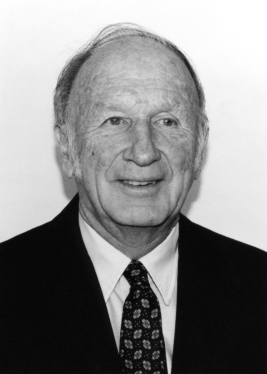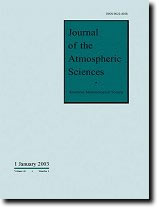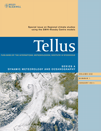Tellus is a Latin word meaning "Earth" and may refer to:

Atmospheric science is the study of the Earth's atmosphere and its various inner-working physical processes. Meteorology includes atmospheric chemistry and atmospheric physics with a major focus on weather forecasting. Climatology is the study of atmospheric changes that define average climates and their change over time climate variability. Aeronomy is the study of the upper layers of the atmosphere, where dissociation and ionization are important. Atmospheric science has been extended to the field of planetary science and the study of the atmospheres of the planets and natural satellites of the Solar System.

Bert Rickard Johannes Bolin was a Swedish meteorologist who served as the first chairman of the Intergovernmental Panel on Climate Change (IPCC), from 1988 to 1997. He was professor of meteorology at Stockholm University from 1961 until his retirement in 1990.

Carl-Gustaf Arvid Rossby was a Swedish-born American meteorologist who first explained the large-scale motions of the atmosphere in terms of fluid mechanics. He identified and characterized both the jet stream and the long waves in the westerlies that were later named Rossby waves.

The American Meteorological Society (AMS) is a scientific and professional organization in the United States promoting and disseminating information about the atmospheric, oceanic, and hydrologic sciences. Its mission is to advance the atmospheric and related sciences, technologies, applications, and services for the benefit of society.

Paul Jozef Crutzen was a Dutch meteorologist and atmospheric chemist. He and Mario Molina and Frank Sherwood Rowland were awarded the Nobel Prize in Chemistry in 1995 for their work on atmospheric chemistry and specifically for his efforts in studying the formation and decomposition of atmospheric ozone. In addition to studying the ozone layer and climate change, he popularized the term Anthropocene to describe a proposed new epoch in the Quaternary period when human actions have a drastic effect on the Earth. He was also amongst the first few scientists to introduce the idea of a nuclear winter to describe the potential climatic effects stemming from large-scale atmospheric pollution including smoke from forest fires, industrial exhausts, and other sources like oil fires.

Edward Norton Lorenz was an American mathematician and meteorologist who established the theoretical basis of weather and climate predictability, as well as the basis for computer-aided atmospheric physics and meteorology. He is best known as the founder of modern chaos theory, a branch of mathematics focusing on the behavior of dynamical systems that are highly sensitive to initial conditions.
ICARUS is a scientific journal dedicated to the field of planetary science. It is officially endorsed by the American Astronomical Society's Division for Planetary Sciences (DPS). The journal contains articles discussing the results of new research on astronomy, geology, meteorology, physics, chemistry, biology, and other scientific aspects of the Solar System or extrasolar systems.

Charles David Keeling was an American scientist whose recording of carbon dioxide at the Mauna Loa Observatory confirmed Svante Arrhenius's proposition (1896) of the possibility of anthropogenic contribution to the greenhouse effect and global warming, by documenting the steadily rising carbon dioxide levels. The Keeling Curve measures the progressive buildup of carbon dioxide, a greenhouse gas, in the atmosphere.

The European Geosciences Union (EGU) is a non-profit international union in the fields of Earth, planetary, and space sciences whose vision is to "realise a sustainable and just future for humanity and for the planet." The organisation has headquarters in Munich, Germany. Membership is open to individuals who are professionally engaged in or associated with these fields and related studies, including students, early career scientists and retired seniors.

The Journal of the Atmospheric Sciences is a scientific journal published by the American Meteorological Society. It covers basic research related to the physics, dynamics, and chemistry of the atmosphere of Earth and other planets, with emphasis on the quantitative and deductive aspects of the subject.

Syukuro "Suki" Manabe is a Japanese–American physicist, meteorologist, and climatologist, who pioneered the use of computers to simulate global climate change and natural climate variations. He was awarded the 2021 Nobel Prize in Physics jointly with Klaus Hasselmann and Giorgio Parisi, for his contributions to the physical modeling of Earth's climate, quantifying its variability, and predictions of climate change.

The Nanjing University of Information Science and Technology is a provincial public university in Nanjing, Jiangsu, China.

Tellus Series A: Dynamic Meteorology and Oceanography is a peer-reviewed scientific journal that is published by Co-action Publishing on behalf of the International Meteorological Institute in Stockholm, Sweden. Since January 2012, the journal is published open access. Until that time it had been published as a subscription journal by Blackwell Munksgaard. The journal publishes original articles, short contributions and correspondence encompassing dynamic meteorology, climatology and oceanography, including numerical modelling, synoptic meteorology, weather forecasting, and climate analysis.
Edward Epstein was an American meteorologist who pioneered the use of statistical methods in weather forecasting and the development of ensemble forecasting techniques.
Pancheti Koteswaram was an Indian meteorologist, hydrologist, atmospheric physicist and the Director-General of Observatories of Government of India. He was a professor at University of Chicago, University of Hawaii, University of Miami and Tehran University and served as a research associate at National Hurricane Research Laboratory, Miami, and the National Centre for Atmospheric Research, Colorado. A former vice-president of World Meteorological Organization (WMO), Geneva, he was an elected Fellow of the Indian Academy of Sciences, Indian National Science Academy and the Andhra Pradesh Academy of Sciences. The Government of India awarded him the third highest civilian honour of the Padma Bhushan, in 1975, for his contributions to science.

Johannes "Jos" Lelieveld is a Dutch atmospheric chemist. Since 2000, he has been a Scientific Member of the Max Planck Society and director of the Atmospheric Chemistry Department at the Max Planck Institute for Chemistry in Mainz. He is also professor at the University of Mainz and at the Cyprus Institute in Nicosia.
Patricia K. Quinn is an atmospheric chemist working at the National Oceanic and Atmospheric Agency's Pacific Marine Environmental Lab. She is known for her work on the impact of atmospheric aerosol particles on air quality and climate.













